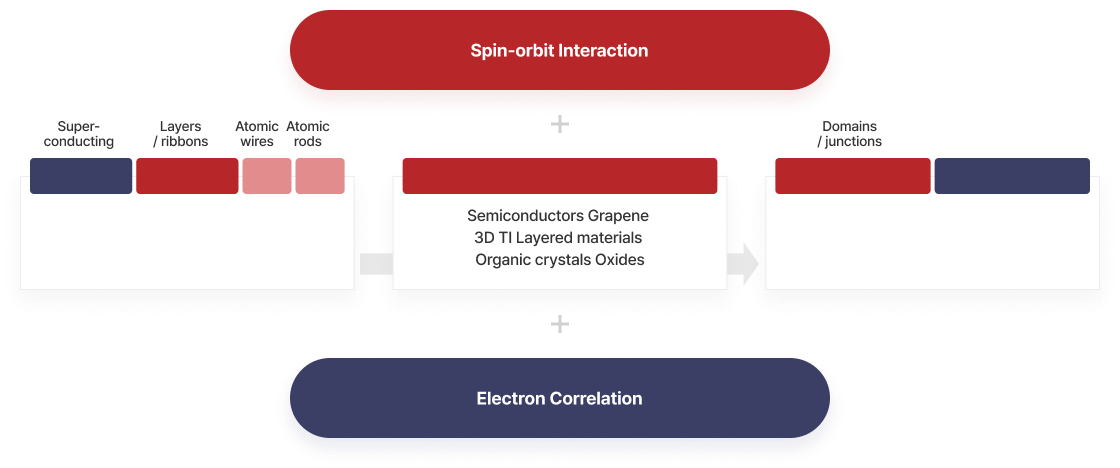About CALDES
Introduction
Our society in 21st century is based on information technology, which is supported by logic and memory devices from the semiconductor industry. So far, the development of such device industry has been maintained by the progress of the down-sizing process technology to mass-produce smaller and cheaper devices. However, as a result of the eye-catching development during last decades to reach down to 10 nm scale devices, the fundamental limitation of the down-sizing, in turn, becomes obvious and imminent now. This constitutes the current crisis of the electronics industry and threatens the further development of information technology and the society based heavily on it. This situation calls urgently for (i) the invention of new devices in unprecedented dimensions and functionality, (ii) the paradigm shift in the concept of information processing such as quantum or neuromorphic computing, and (iii) the substantial development in understanding fundamental physics underlying such new devices and information processing.
In materials science and physics, this situation requested nano or atomic scale materials and device concept, which have been rigorously investigated during last two decades. However, the success of such nano or atomic scale devices is limited largely to unit devices, and the scaling into mass production is not guaranteed at all. On the other hand, during last few years, new types of low dimensional materials have been introduced such as graphene, which provided great hope for ultra performance devices beyond the limitation of the conventional semiconductor devices. While mass producible electronic devices based on graphene seem not feasible yet due to material and process issues, the splendid success of graphene clearly evidenced that new types of low dimensional electronic systems hosted by new materials can provide the mankind a totally different direction in device technology. This lesson was reinforced by the impressive finding of topological insulator materials and the extension of atomic scale 2D materials into various transition metal dichalcogenides in last few years. Including the Dirac electron system of graphene, these new types of 1D and 2D electronic systems substantially widen our understanding of electronic properties of solid materials in terms of the generalized symmetry and topological order. Moreover, various new distinct topological materials are classified by theory and identified experimentally. This suggests clearly that there are great opportunity and challenges in finding new types of materials and new types of electronic systems with exotic and unprecedented electronic properties along this direction. We define this as ‘new opportunity in low dimensional electronic systems.’
In fact, topological materials are only the recent example in modern history of condensed matter physics, where the low dimensional electronic systems have consistently played a major role. The exotic quantum physics such as fractional quantum Hall effect, high-temperature superconductivity, and Fe-based superconductivity are among other examples. Including the heavy Fermion systems and charge density wave systems, the ground state phase diagrams of these systems exhibit generic features such as quantum phase transitions generated by the competition of different broken symmetry orders. This similarity constitutes a grand picture for exotic correlated electronic systems, whose essence is largely not understood yet. We call this as “the grand old problem of low dimensional electrons.” The grand problem of low dimensional electrons is based on strong interactions of electrons in essence.
Our center envisions to find new material systems and new physics by combining the new opportunity and the grand problem of low dimensional electronic systems, that is, by combining the topological and materials degrees of freedom with the strong interactions inherent to these electronic systems. In our long-term goal, we hope to develop revolutionary materials and physics, which may lead to a new paradigm in device technology beyond the silicon technology.

 Center for Artificial Low
Center for Artificial Low